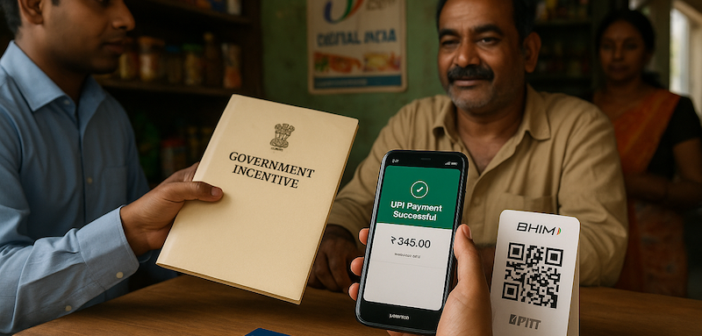TL;DR
In 2023–24, the government disbursed Rs. 3,624.7 crores as incentives to banks and payment entities for promoting RuPay debit cards and low-value UPI transactions. Incentives for low-value UPI received the lion’s share, while a handful of major banks emerged as the biggest beneficiaries.
Context:
The rapid rise of digital payments in India, particularly through UPI, has transformed everyday transactions. Yet, banks and payment service providers often bear costs for processing low-value merchant payments, making them less inclined to promote such transactions without support.
To address this challenge, the Government of India introduced the Incentive Scheme for Promotion of RuPay Debit Cards and Low-Value BHIM-UPI Transactions. The scheme is designed to reduce reliance on cash by encouraging small-ticket digital purchases, promoting RuPay debit cards as a domestic alternative to global networks like Visa and Mastercard, and advancing financial inclusion by keeping digital payments affordable and accessible for small merchants and consumers. Implemented through the National Payments Corporation of India (NPCI), it offsets transaction costs by reimbursing banks and payment entities, ensuring that digital payments remain sustainable at scale.
Who compiles this data?
The data is compiled by the Department of Financial Services under the Ministry of Finance, based on claims settled under the incentive scheme, with implementation routed through NPCI.
Where can I download clean & structured data related to the scheme?
Clean, structured, and ready-to-use state level dataset on Year and bank wise amount disbursed under various incentive schemes for promotion of RuPay Debit Cards and low-value UPI transactions can be downloaded from Dataul. The dataset includes only those banks and entities that received incentive payouts of Rs. 5 lakh or more. This dataset was collated with data sourced using RTI.
Key Insights
- Government payouts under the incentive scheme more than doubled from Rs. 1,389 crores in 2021–22 to Rs. 3,631 crores in 2023–24, driven almost entirely by the surge in UPI incentives. While RuPay’s share fell from 31% to 10% with payouts steadily declining, UPI’s share jumped to 90%, highlighting its dominance in everyday digital transactions.
- In 2023-24, the top five beneficiaries together accounted for over 55% of all disbursements, highlighting the dominance of large banks and payment banks in processing India’s retail digital transactions.
Why does it matter?
The disbursements highlight how public funds are being used to underpin India’s digital payments ecosystem. By offsetting costs for banks and payment providers, the scheme ensures that customers and merchants can transact seamlessly without extra charges. The data also provides transparency on government spending and reveals which institutions are driving digital payments adoption across the country.
Key Numbers
- Payouts for RuPay debit cards
Rs. 432 crores (2021-22) → Rs. 408 crores (2022-23) → Rs. 363 crores (2023-24)
- Incentives for UPI
Rs. 957 crores (2021-22) → Rs. 1,802 crores (2022-23) → Rs. 3,268 crores (2023-24)
- Amount disbursed to top 5 beneficiaries in 2023-24
Rs. 2,025.61 crores



